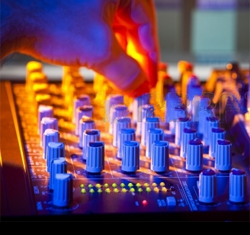The meaning of the word “good” is one of my odd and recurring fascinations. What makes a “good” mix?
Music is a subjective field with many general principles but very few hard and fast rules.
The arts are inherently up for interpretation — and so “good” to one person may be “bad” to another. I could site examples of this, except there’s so many I feel there’s really no need.
So I often repose the question to myself: what makes a “good” mix? After all, that’s what I get paid for right? To make “good”/”great”/”unfrickin’ real” mixes.
Keeping in true-to-blog format, here’s a list of what I feel makes for the levels of “goodness” in a mix.
Level 1: Getting The Sound “Out of the Way”
At the most fundamental level, recordings are ultimately adulterated forms of a musical performance.
The fact is nothing really equates to the sound in the room, and when we start putting microphones in between the performance and the two measly speakers that are attempting to regurgitate that performance, it’s going to fall flat.
Couple that with any deficiencies of the recording space, equipment, or (hey, hey) tracking engineer — or lack thereof — and we soon find that the record pales in comparison.
Level 1 is the recognition that mixing is a necessary evil — someone has to compensate for all of this and “get the sound out of the way.”
Because it’s really hard to enjoy a performance when the guitar sounds like it’s under a blanket and the vocal sounds like the singer was chewing on the microphone in a space that sounds like a space-cavern and coffin at the same time.
No matter how good the performance is, bad sound is going to interfere with the listener’s experience.
Level 2: Making The Sound “Larger Than Life”
Once the sound is out of the way the most important job is done. But now we get to view mixing as a creative medium.
While a recording will never have the power and impact of a live performance, the actual sound performance can do things that can’t happen in nature. And that’s a fantastic thing.
Records, like film, have grown into their own art because of the manipulation that can occur. We can create a sound that is “larger than life”.
This comes in many forms: giving the sound a greater space, elements that are more vivid than we would hear them even in the best of sound systems, shaping sounds to have a stronger perceived impact than they normally would, etc.



















